 At a glance
At a glance
Expert’s Rating
Pros
- Over 3GBps reading and 2.5GBps writing
- Tiny, shirt-pocketable form factor
- Magnetic mounting ring included
- Astoundingly affordable for USB4
Cons
- Slightly off the performance pace for USB4
Our Verdict
The uber-small form factor, good performance, and super-low price make the Addlink P30 one of my favorite USB4 SSDs. The magnetic mounting ring is a hoot as well, though pros might prefer faster real-world performance.
Price When Reviewed
This value will show the geolocated pricing text for product undefined
Best Pricing Today
Best Prices Today: Addlink P30 USB4 SSD

$89.44
Absolutely the first thing you’ll notice upon unboxing Addlink’s P30 portable USB4 SSD is how tiny it is.
And while not really large enough to show it off fully, it’s a good-looking little critter. It’s also light in the hand, and light on your wallet.
Read on to learn more, then see our roundup of the best external drives for comparison.
What are the Addlink P30’s features?
The P30 is a super-small USB4 SSD measuring a mere 2.5-inches square, by approximately 0.5-inches thick. It weighs only 1.9 ounces solo, and 2.1 ounces with the included 5-inch, 40Gbps Type-C to Type-C cable.
Unlike many vendors, Addlink let us know exactly what controller and NAND are inside: a Phison PS2251-21 and 162-layer Kioxia BiCS6 TLC (Triple-Level Cell/3-bit) NAND. Thanks, guys!
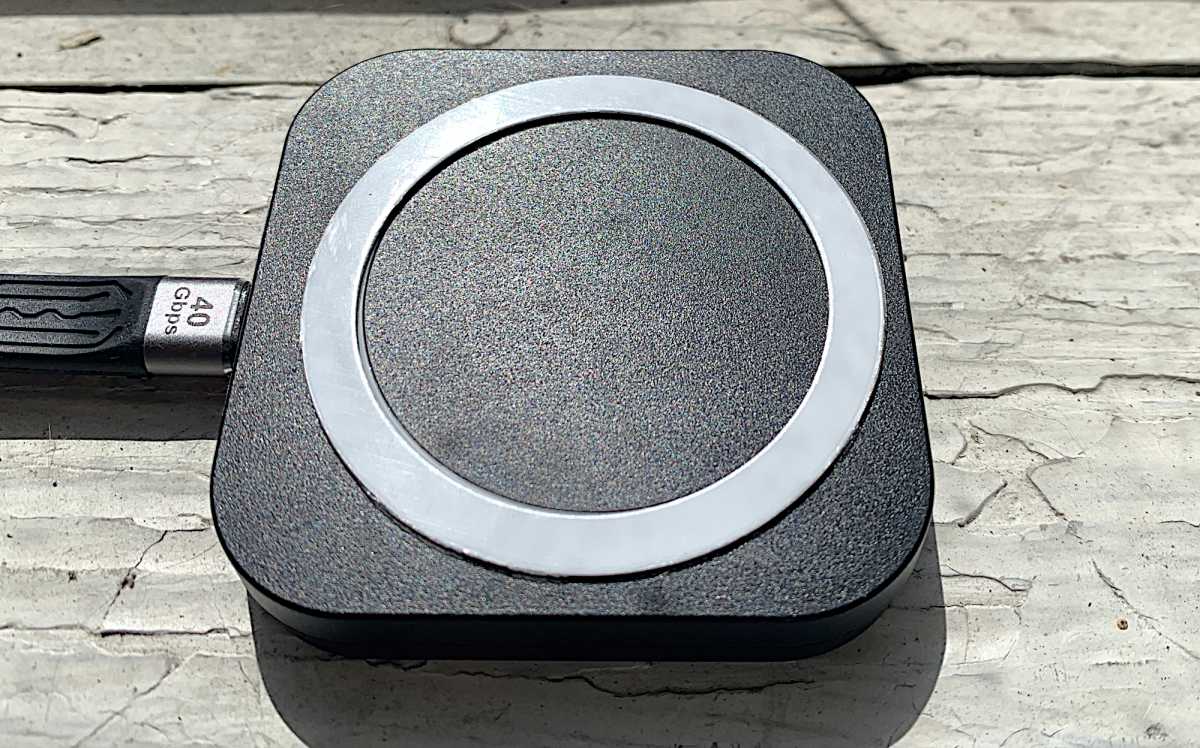
The P30 is warrantied for five years. And though I wasn’t provided a TBW rating, given that the NAND is TLC, I’d guess 600TBW per terabyte of capacity. Whatever it is, it’s highly unlikely you’ll exceed it before the warranty period expires.
If you’re not familiar, TBW is terabytes written, and represents how much data you can write to the drive before it goes into read/write mode. Note that TBW is a worst-case estimate, and part of a financial liability formula. You might get a lot more — out of warranty.
How much does the Addlink P30 cost?
The P30 is available in 1TB capacity for $89.44 (tested) and 2TB for $158.44. That’s darn affordable for USB4. In fact, it’s about half the cost of the top-rated Adata SE920.
Of course, with larger amounts of data, the SE920 borders on twice as fast, but our test P30 was slightly handicapped as a 1TB unit with less secondary cache than its rival.
A 4TB version is in the works, but not yet available.
The P30’s value proposition is lots of capacity in a tiny form factor.
How fast is the Addlink P30?
After a recent spate of compatibility issues with Sandisk and WD (Sandisk), it was a joy to test the P30, which both behaved itself, and turned in a relatively smooth performance. That said, and as just mentioned, being only a 1TB drive, it did run out of steam at points during our 48GB and 450GB write tests.
Although not as fast as some larger drives (thermal considerations are no doubt a thing), the P30 is still quite fast in the grand scheme.
You can see where the P30 lagged in CrystalDiskMark 8’s sequential tests below, but it still edged out the Corsair EX400U — a similar design.
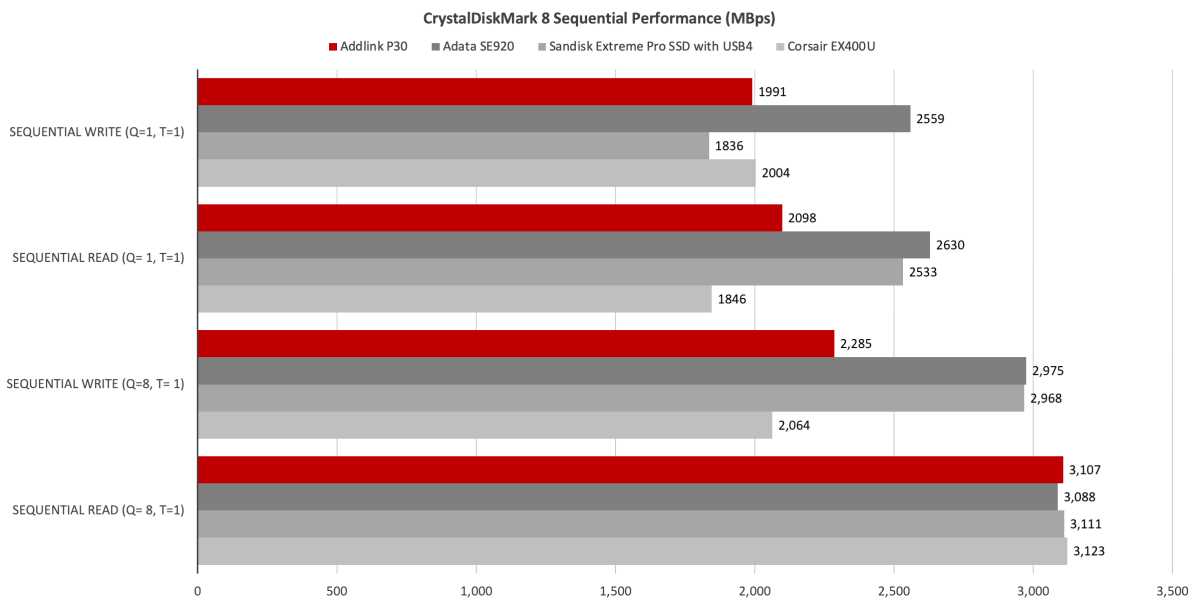
The Addlink P30’s random performance was more in keeping with the competition in CrystalDiskMark 8.
Note that we’re still puzzled by the Sandisk Extreme Pro SSD with USB4’s miserable single-queue/single-thread write score. Not to mention the reasoning behind its ponderous moniker.
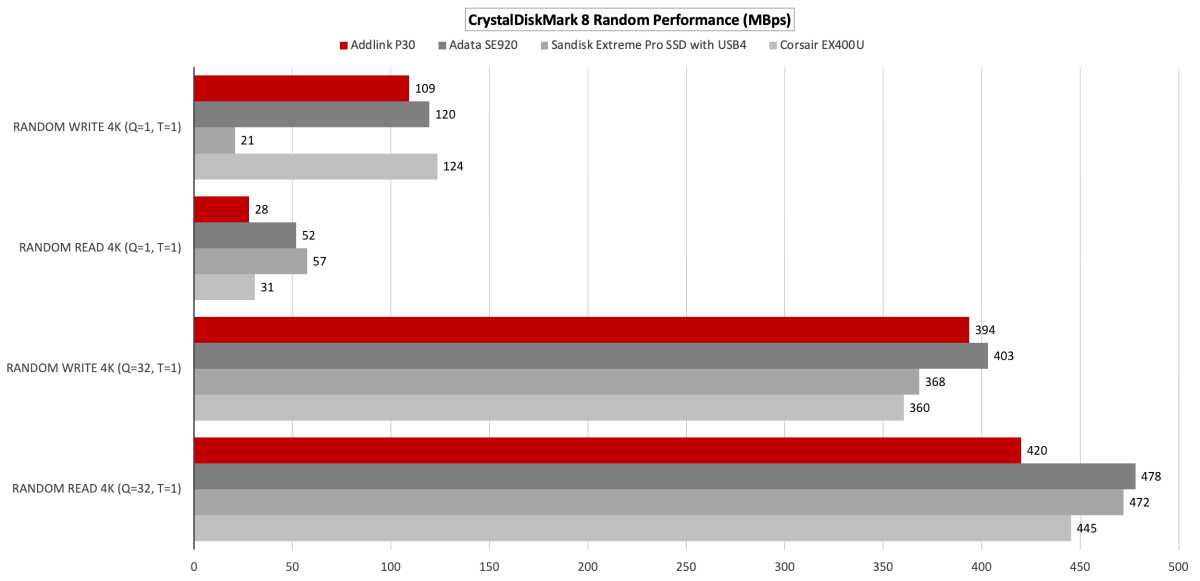
Where the P30 really started to lag behind was in the 48GB transfers. While not horrible, they’re certainly nothing to write home about. Again, 1TB.
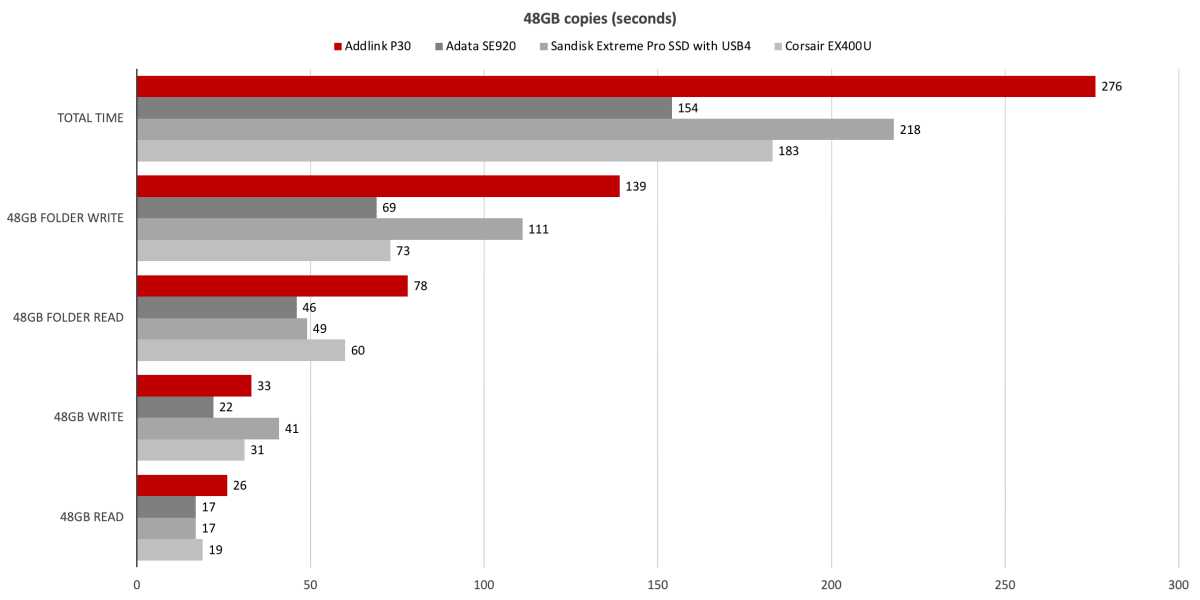
At twice the price, the SE920 is actually more than twice as fast as the P30 writing our 450GB file. But some of the difference was due to the SE920 having twice the capacity (2TB) and twice the secondary cache.
Not to hammer the excuse, but the Addlink P30 would turn in much better 450GB write times in its 2TB or 4TB flavors.
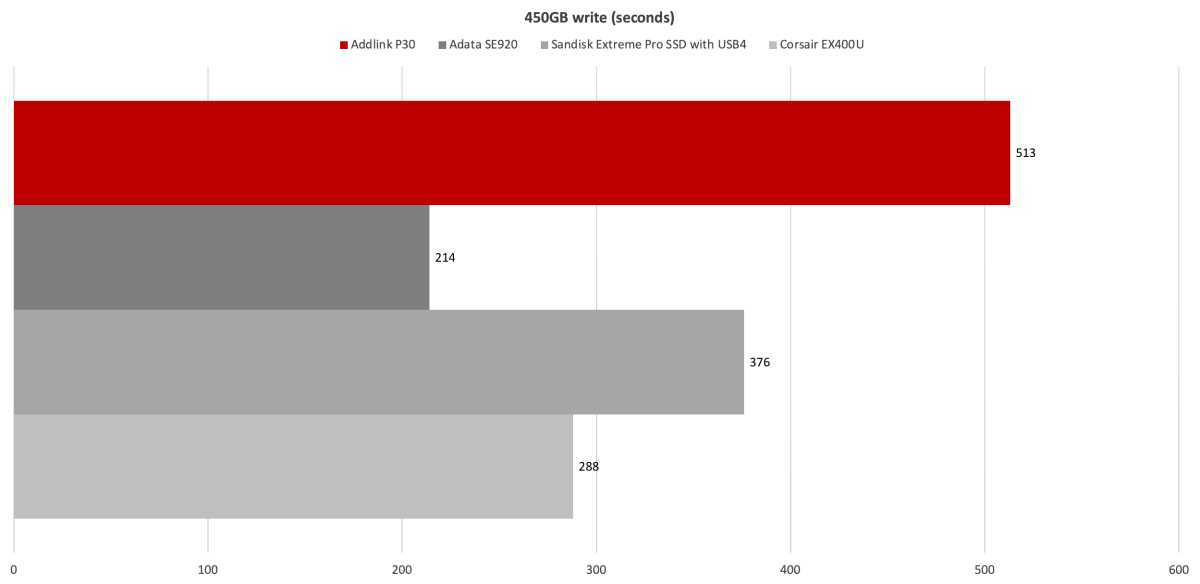
Below you can see the why behind the slowish 450GB write — only about 50GB of secondary cache — i.e., TLC written as SLC to avoid the ponderous error-checking (in SSD terms) induced by multiple possible cell-voltage levels.
The good news is that the write speed drops only to around 830MBps. Previous generations of NAND, especially QLC (Quad-Level Cell.4-bit) could drop to 100MBps — slower than a hard drive. Even modern QLC writes at only a little over twice that.
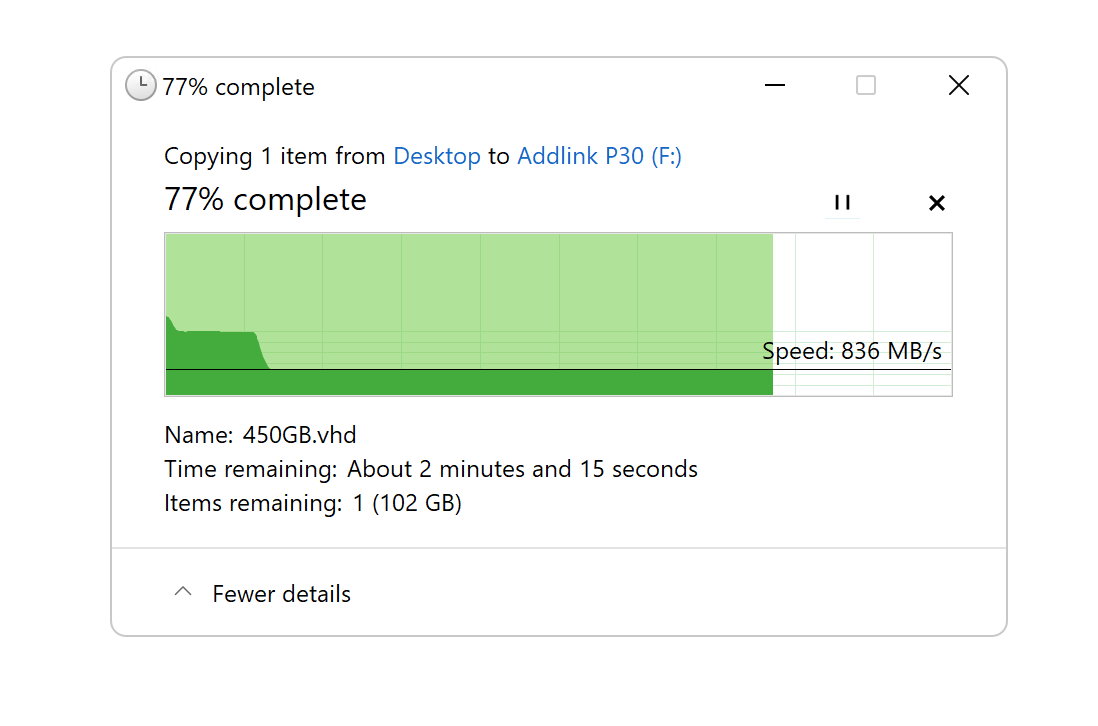
While not the best USB4 performer I’ve tested (it’s actually in last place and slower in the real-world transfers than several 20Gbps SSDs), the P30’s value proposition is lots of capacity in a tiny form factor. Given that, I’ll call it fast enough. For light data-transfer duties, it’s certainly that.
Should you buy the Addlink P30?
I say, have at it. This tiny P30 has found a place in my heart and one of my computers — magnetically attached of course. Cool, inexpensive (for USB4), and very portable beans from Addlink.
On the other hand, if you’re after top 40Gbps performance, you’ll need to spend more bucks on an SSD such as the oft-mentioned Adata SE920.
How we test
Our storage tests currently utilize Windows 11 (22H2) 64-bit running on a Z790 (PCIe 5.0) motherboard/i5-12400 CPU combo with two Kingston Fury 32GB DDR5 modules (64GB of memory total). Intel integrated graphics are used. The 48GB transfer tests utilize an ImDisk RAM disk taking up 58GB of the 64GB total memory. The 450GB file is transferred from a Samsung 990 Pro 2TB, which also contains the operating system.
Each test is performed on a newly formatted and TRIM’d drive so the results are optimal. Note that as any drive fills up, performance will decrease due to less NAND for secondary caching, and other factors.
The performance numbers shown apply only to the drive we were shipped as well as the capacity tested. SSD performance can vary by capacity due to more or fewer chips to read/write across and the amount of NAND available for secondary caching (writing TLC/QLC as SLC). Vendors also occasionally swap components. If you ever notice a large discrepancy between the performance you experience and that which we report (systems being roughly equal), by all means — let us know.




